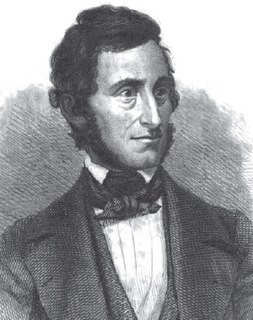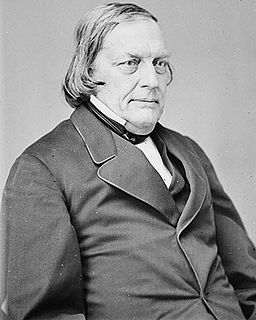The 1851 United States Senate election in New York was held on February 4 and March 18/19, 1851, by the New York State Legislature to elect a U.S. Senator (Class 1) to represent the State of New York in the United States Senate.
| Elections in New York State |
|---|
 |
The 1851 United States Senate election in New York was held on February 4 and March 18/19, 1851, by the New York State Legislature to elect a U.S. Senator (Class 1) to represent the State of New York in the United States Senate.
Daniel S. Dickinson (Dem.) had been elected in 1845 to this seat, and his term would expire on March 3, 1851.
At this time the Whig Party in New York was split in two opposing factions: the Seward/Weed faction (the majority, opposed to the Compromise of 1850) and the "Silver Grays" (supporters of President Millard Fillmore and his compromise legislation, led by Francis Granger whose silver gray hair originated the faction's nickname). The opposing factions of the Democratic Party in New York, the "Barnburners" and the "Hunkers", had reunited at the State election in November 1850, and managed to have almost their whole State ticket elected, only Horatio Seymour was defeated for governor by a plurality of 262 votes.
At the State election in November 1849, 14 Seward Whigs, 3 Silver Gray Whigs and 15 Democrats were elected for a two-year term (1850–1851) in the State Senate. At the State election in November 1850, a Whig majority was elected to the Assembly for the session of 1851. The 74th New York State Legislature met from January 7 to April 17, and from June 10 to July 11, 1851, at Albany, New York.
Ex-Governor of New York Hamilton Fish was the candidate of the Whig Party.
Hamilton Fish belonged to the Seward/Weed faction, but was also a close friend of Henry Clay who was one of the leaders of the Fillmore faction in Washington, D.C. He was thus considered the only viable compromise candidate. The Silver Grays asked Fish to pledge his support for the Compromise, but Fish refused to make any comment, saying that he did not seek the office, and that the legislators should vote guided by Fish's known political history. Fish had earlier stated his opposition against the Fugitive Slave Law of 1850 but was believed to support most of the remainder of the Compromise. Nevertheless, Silver Gray State Senator James W. Beekman declared that he would not vote for Fish for personal reasons, a dislike stemming from the time when they were fellow students at Columbia University.
The State Legislature met on February 4, the legally prescribed day, to elect a U.S. Senator. In the Assembly, Fish received a majority of 78 to 49. In the State Senate the vote stood 16 for Fish and 16 votes for a variety of candidates, among them Beekman's vote for Francis Granger. After a second ballot with the same result, Beekman moved to adjourn, which was carried by the casting vote of the lieutenant governor, and no nomination was made.
On February 14, Senator George B. Guinnip offered a resolution to declare John Adams Dix elected to the U.S. Senate. On motion of Senator George R. Babcock, the resolution was laid on the table, i.e. consideration was postponed.
On February 15, Guinnip again offered a resolution to declare John Adams Dix elected to the U.S. Senate. Senator Stephen H. Johnson offered an amendment to this resolution, declaring Daniel S. Dickinson elected. On motion of Senator Marius Schoonmaker, the resolution was laid on the table too.
On March 18, when two Democratic State Senators were absent, having gone to New York City, the Whigs persuaded the Democrats in a 14-hour session to re-open the U.S. Senate election, and in the small hours of March 19 Fish was nominated by a vote of 16 to 12 (Beekman, Johnson [both Whigs], Thomas B. Carroll and William A. Dart [both Dem.] did not vote).
Fish was the choice of both the Assembly and the Senate, and was declared elected.
| Office | Candidate | Party | Senate (32 members) February 4 (first ballot) | Senate (32 members) February 4 (second ballot) | Assembly (128 members) February 4 | Senate (32 members) March 19 | Assembly (128 members) March 19 |
|---|---|---|---|---|---|---|---|
| U.S. Senator | Hamilton Fish | Whig | 16 | 16 | 78 | 16 | 68 |
| John Adams Dix | Democratic | 1 | 1 | 29 | 6 | 6 | |
| James T. Brady [1] | Democratic | 7 | |||||
| Horatio Seymour | Democratic | 1 | 1 | 4 | 1 | ||
| Francis Granger | Whig | 1 | 1 | 2 | 1 | ||
| Aaron Ward | Democratic | 1 | 1 | 1 | |||
| Daniel S. Dickinson | Democratic | 1 | 1 | 1 | |||
| Arphaxed Loomis | Democratic | 1 | 1 | 1 | |||
| Amasa J. Parker | Democratic | 1 | 1 | 1 | |||
| David Buel Jr. | Democratic | 1 | 1 | ||||
| Augustus C. Hand | Democratic | 1 | 1 | ||||
| John Hunter | Democratic | 1 | 1 | ||||
| John Fine | Democratic | 1 | 1 | ||||
| Levi S. Chatfield | Democratic | 1 | 1 | ||||
| John Tracy | Democratic | 1 | 1 | ||||
| Abraham Bockee | Democratic | 1 | 1 | ||||
| George Rathbun | Democratic | 1 | 1 | ||||
| Timothy Jenkins | Democratic | 1 | 1 | ||||
| William L. Marcy | Democratic | 1 | |||||
| Washington Irving | 1 | ||||||
| John L. Riker [2] | 1 | ||||||
| Erastus Corning | Democratic | 1 | |||||
| Levi S. Chatfield | Democratic | 1 | |||||
| George Wood | 1 | ||||||
| Daniel Lord | 1 | ||||||
| James S. Wadsworth | Democratic | 1 | |||||
| William C. Bouck | Democratic | 1 | |||||
Fish took his seat on December 1, 1851, and remained in office until March 3, 1857.
The 1852 Whig National Convention was a presidential nominating convention held from June 17 to June 20, in Baltimore, Maryland. It nominated the Whig Party's candidates for president and vice president in the 1852 election. The convention selected General-in-Chief Winfield Scott for president and U.S. Secretary of the Navy William A. Graham for vice president.

The 1850 New York state election was held on November 5, 1850, to elect the Governor, the Lieutenant Governor, a Canal Commissioner, an Inspector of State Prisons and the Clerk of the Court of Appeals, as well as all members of the New York State Assembly.

The 1825/1826 United States Senate election in New York was held on February 1, 1825, and January 14, 1826, by the New York State Legislature to elect a U.S. Senator to represent the State of New York in the United States Senate.

The 1839/1840 United States Senate election in New York was held on February 5, 1839, and January 14, 1840, by the New York State Legislature to elect a U.S. Senator to represent the State of New York in the United States Senate.

The 1845 United States Senate special election in New York was held on January 18, 1845 by the New York State Legislature to elect two U.S. Senators to represent the State of New York in the United States Senate. The regular 1845 United States Senate election in New York was held on February 4, 1845, to elect a U.S. Senator to represent the State of New York in the United States Senate.

The 1849 United States Senate election in New York was held on February 6, 1849, by the New York State Legislature to elect a U.S. Senator to represent the State of New York in the United States Senate.

The 1855 United States Senate election in New York was held on February 6, 1855, by the New York State Legislature to elect a U.S. Senator to represent the State of New York in the United States Senate.

The 1857 United States Senate election in New York was held on February 3, 1857 by the New York State Legislature. Incumbent Whig Senator Hamilton Fish did not stand for re-election. The seat was won by Preston King, a former U.S. Representative and member of the newly-formed Republican Party. King was the first Republican elected to represent New York, although William H. Seward had joined the party after being elected as a Whig in 1855.

The 1861 United States Senate election in New York was held on February 5, 1861, by the New York State Legislature to elect a U.S. Senator to represent the State of New York in the United States Senate.
The United States Senate elections of 1850 and 1851 were elections which had the Democratic Party lose seats, but retain a majority in the United States Senate.
The United States Senate elections of 1848 and 1849 were elections which had the Democratic Party lose seats but maintain control of the United States Senate.
The United States Senate elections of 1856 and 1857 were elections which had the young Republican Party assume its position as one of the United States's two main political parties. The Whigs and Free Soilers were gone by the time the next Congress began.
The United States Senate elections of 1854 and 1855 were elections which saw the final decline of the Whig Party and the continuing majority of the Democrats. Those Whigs in the South who were opposed to secession ran on the "Opposition Party" ticket, and were elected to a minority. Along with the Whigs, the Senate roster also included Free Soilers, Know Nothings, and a new party: the Republicans. Only five of the twenty-one Senators up for election were re-elected.
The United States Senate elections of 1842 and 1843 were elections which had the Whigs lose seats but maintain control of the United States Senate. Although they lost three seats in the regular elections, they gained two of them back by the start of the first session in special elections.

The United States Senate elections of 1860 and 1861 were elections corresponding with Abraham Lincoln's election to the presidency. The nascent Republican Party increased their Senate seats in the regular elections, and after southern Democrats withdrew to join the Confederacy, Republicans gained control of the United States Senate. To establish a quorum with fewer members, a lower total seat number was taken into account.

The 68th New York State Legislature, consisting of the New York State Senate and the New York State Assembly, met from January 7 to May 14, 1845, during the first year of Silas Wright's governorship, in Albany.

The 72nd New York State Legislature, consisting of the New York State Senate and the New York State Assembly, met from January 2 to April 11, 1849, during the first year of Hamilton Fish's governorship, in Albany.

The 73rd New York State Legislature, consisting of the New York State Senate and the New York State Assembly, met from January 1 to April 10, 1850, during the second year of Hamilton Fish's governorship, in Albany.

The 74th New York State Legislature, consisting of the New York State Senate and the New York State Assembly, met from January 7 to July 11, 1851, during the first year of Washington Hunt's governorship, in Albany.

The 78th New York State Legislature, consisting of the New York State Senate and the New York State Assembly, met from January 2 to April 14, 1855, during the first year of Myron H. Clark's governorship, in Albany.